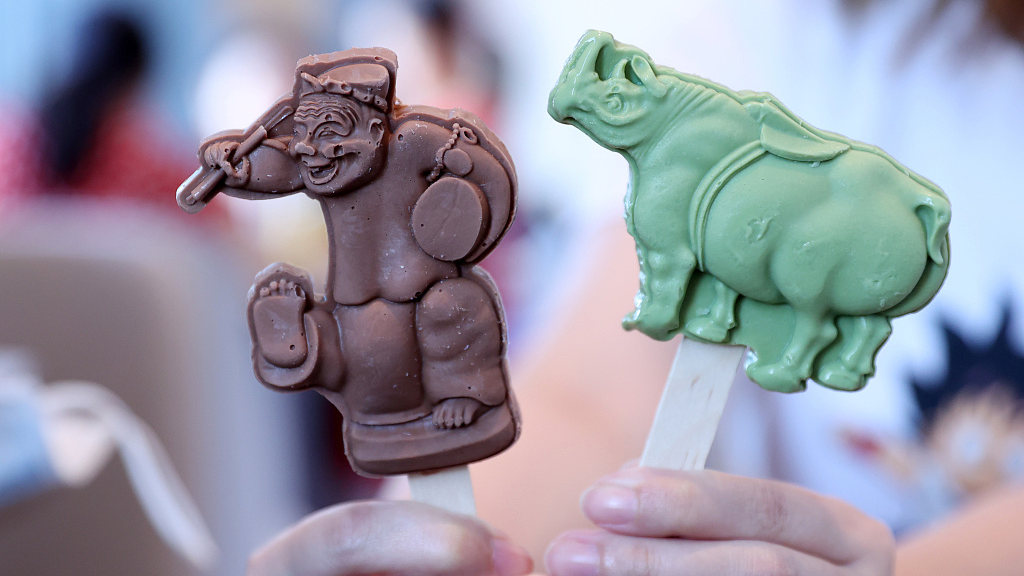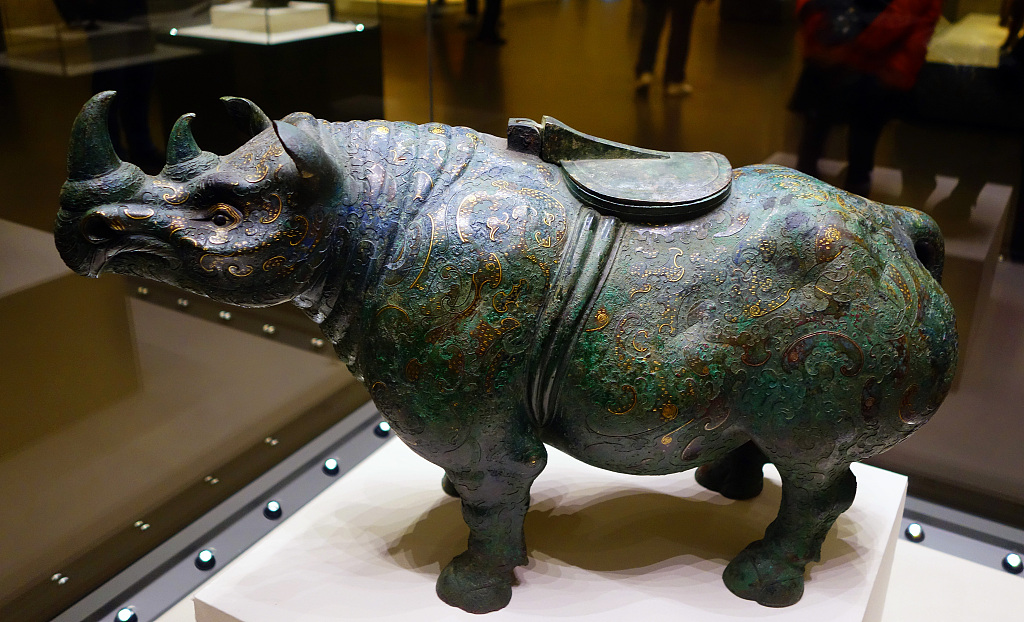
The National Museum of China rolls out two ice cream bars in the shape of cultural relics. /CFP
The National Museum of China rolls out two ice cream bars in the shape of cultural relics. /CFP
The National Museum of China has rolled out two ice cream bars in the shape of cultural relics, attracting about 20 million Weibo users to have a taste.
The ice cream bars, flavored chocolate and matcha respectively, are molded from Pottery Story-teller Beating a Drum and Rhinoceros-shaped Bronze Zun, both of which date back to the Han Dynasty (206 B.C. – 220 A.D.) and are displayed at the museum's ancient China hall.
The ice cream bars are being sold at the museum's cafe at 15 yuan (2.2 U.S. dollars) each.
A customer said the ice cream bars are aesthetically pleasing and also tasty.
It's not the National Museum of China's first attempt at promoting ancient culture through food.

The Rhinoceros-shaped Bronze Zun is displayed at the National Museum of China in Beijing. /CFP
The Rhinoceros-shaped Bronze Zun is displayed at the National Museum of China in Beijing. /CFP
Earlier in July, the museum made a "talkative" lollipop with a pattern of "Da Ji" Double Gourd Wall Vase. When you bite into the lollipop, the candy serves as your audio tour guide because of the press-and-start chip inside its stick.
The museum has introduced many creative food items inspired by cultural relics in recent years, including Four-goat Square Zun-shaped chocolate, Ruyi characters inscribed bean cake, and Houmuwu Ding-shaped cookie.
Besides the National Museum of China, museums and historical sites across China, such as Suzhou Museum, Sanxingdui Museum and the Summer Palace, have also introduced creative food and products to expand their cultural reach.
The overall scale of the museum's cultural and creative market increased by three times in 2019 compared with that of 2017, according to the 2019 Museum Cultural and Creative Products Market Data Report, jointly released by the Institute of Cultural Economy of Tsinghua University and e-commerce platform Tmall.
The report also revealed that the number of consumers who bought museum cultural and creative products exceeded nine million in 2019, a four-fold increase compared to 2017.